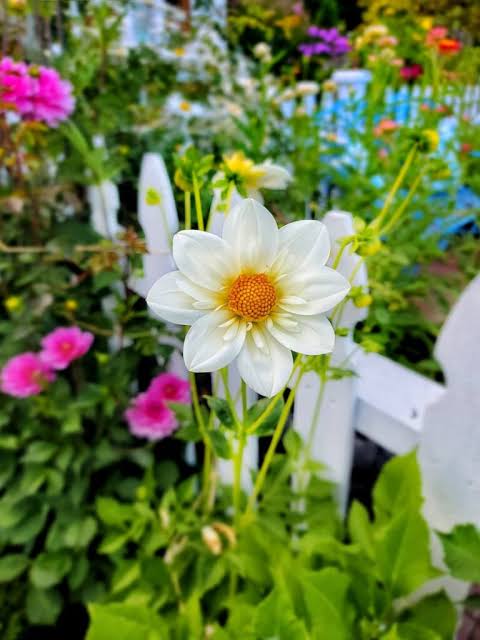Nothing elevates a home like a vase of fresh, fragrant flowers. But instead of buying bouquets every week, why not grow your own? A cut flower garden is a clever way to enjoy continuous blooms from spring to fall. It’s not only simple to create but also incredibly rewarding—you’ll have an endless supply of vibrant stems for arrangements, gifts, and home décor.In this guide, we’ll walk through everything you need to know to do a cut flower garden done right—from planning and planting to harvesting and styling.Why Start a Cut Flower Garden?Creating your own cut flower garden is about more than just growing pretty blooms:Cost-effective: Save money on buying bouquets.Fresh and long-lasting: Homegrown flowers last longer in a vase.Creative freedom: Mix colors, textures, and scents as you wish.Therapeutic: Gardening is a natural stress reliever.Eco-friendly: Fewer imported flowers mean a lower carbon footprint.Planning Your Cut Flower Garden1. Choose the Right LocationFlowers thrive in sunny spots. Aim for 6–8 hours of direct sunlight daily. Good soil drainage is also key—soggy roots mean unhappy plants.2. Decide on the Garden StyleFormal rows: Easy to manage and harvest.Cottage-style mix: A whimsical look with intermingling blooms.Raised beds or containers: Perfect for smaller spaces or patios.3. Pick Seasonal FavoritesA cut flower garden done right includes plants that bloom at different times:Spring: Tulips, daffodils, ranunculusSummer: Zinnias, sunflowers, cosmos, dahliasFall: Chrysanthemums, asters, marigoldsBest Flowers for CuttingHere are some reliable performers:Zinnias – Bright, cheerful, and long-lasting in vases.Cosmos – Delicate petals and airy stems.Sunflowers – A bold statement flower.Snapdragons – Tall spikes for vertical interest.Dahlias – Showstoppers in a variety of shapes and colors.Sweet peas – Fragrant and perfect for small arrangements.Pro tip: Mix annuals (for instant color) and perennials (for long-term structure).Planting Tips for SuccessPrepare the soil – Add compost or organic matter for nutrient-rich beds.Stagger planting times – Sow seeds every 2–3 weeks for continuous blooms.Space wisely – Crowded flowers compete for nutrients and airflow.Support tall flowers – Use stakes or netting for varieties like dahlias and sunflowers.Water regularly – Aim for consistent moisture, especially during dry spells.Harvesting Like a ProA cut flower garden done right means knowing when and how to harvest:Time of day: Early morning or evening when stems are well-hydrated.Tools: Use sharp, clean shears to avoid crushing stems.Stage of bloom: Pick when buds are just starting to open for longest vase life.Hydration: Place cut stems in water immediately.Extending Vase LifeTo keep your bouquets looking fresh:Change the water every 2 days.Trim stems at an angle to maximize water absorption.Remove any leaves below the waterline.Add a teaspoon of sugar or floral preservative to the vase.Creative Styling IdeasWith your homegrown flowers, you can create arrangements that feel personal and unique:Rustic charm: Mason jars filled with sunflowers and zinnias.Elegant minimalism: A few tall dahlias in a simple vase.Seasonal vibes: Spring pastels, summer brights, or autumnal warm tones.Common Mistakes to AvoidPlanting too few flowers—always grow more than you think you’ll need.Neglecting succession planting—leads to gaps in blooming.Forgetting to cut—cutting encourages more growth, so don’t hold back!Using poor soil—nutrient-poor soil limits bloom size and quality.ConclusionStarting a cut flower garden done right doesn’t require expert skills—just thoughtful planning, a little care, and a love for blooms. With the right mix of flowers, proper planting, and smart harvesting, you’ll have a steady supply of stunning, fresh bouquets straight from your backyard.So grab your gardening gloves, choose your favorite flowers, and let your garden transform into a living bouquet factory. 🌸✨

